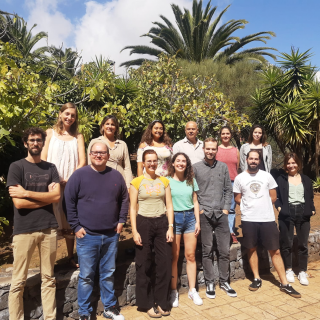Bibcode
Huertas-Company, Marc; Guo, Yicheng; Ginzburg, Omri; Lee, Christoph T.; Mandelker, Nir; Metter, Maxwell; Primack, Joel R.; Dekel, Avishai; Ceverino, Daniel; Faber, Sandra M.; Koo, David C.; Koekemoer, Anton; Snyder, Gregory; Giavalisco, Mauro; Zhang, Haowen
Referencia bibliográfica
Monthly Notices of the Royal Astronomical Society
Fecha de publicación:
9
2020
Número de citas
45
Número de citas referidas
42
Descripción
A significant fraction of high redshift star-forming disc galaxies are known to host giant clumps, whose nature and role in galaxy evolution are yet to be understood. In this work, we first present a new method based on neural networks to detect clumps in galaxy images. We use this method to detect clumps in the rest-frame optical and UV images of a complete sample of ∼1500 star forming galaxies at 1 < z < 3 in the CANDELS survey as well as in images from the VELA zoom-in cosmological simulations. We show that observational effects have a dramatic impact on the derived clump properties leading to an overestimation of the clump mass up to a factor of 10, which highlights the importance of fair comparisons between observations and simulations and the limitations of current HST data to study the resolved structure of distant galaxies. After correcting for these effects with a mixture density network, we estimate that the clump stellar mass function follows a power law down to the completeness limit (107 solar masses) with the majority of the clumps being less massive than 109 solar masses. This is in better agreement with recent gravitational lensing based measurements. The simulations explored in this work overall reproduce the shape of the observed clump stellar mass function and clumpy fractions when confronted under the same conditions, although they tend to lie in the lower limit of the confidence intervals of the observations. This agreement suggests that most of the observed clumps are formed in situ.
Proyectos relacionados

Huellas de la Formación de las Galaxias: Poblaciones estelares, Dinámica y Morfología
Bienvenida a la página web del g rupo de investigación Traces of Galaxy Formation. Somos un grupo de investigación amplio, diverso y muy activo cuyo objetivo principal es entender la formación de galaxias en el Universo de una manera lo más completa posible. Con el estudio detellado de las poblaciones estelares como bandera, estamos constantemente
Ignacio
Martín Navarro